The rare 'ducks foot' pistol, plus five other bizarre and unusual weapons
As a four-barrelled gun comes up for auction, we take a look at some of the most extraordinary weapons ever conceived.
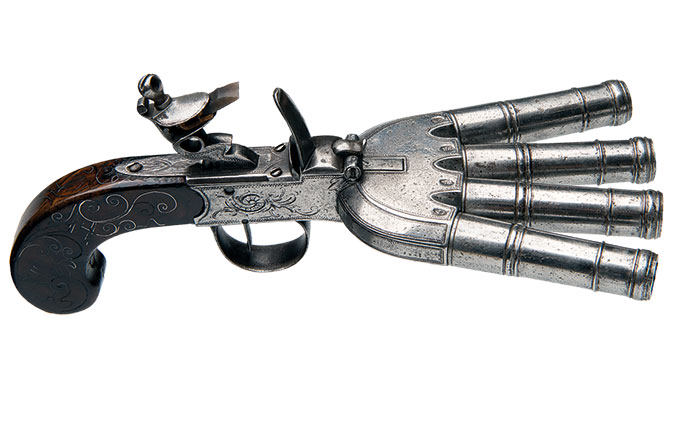

A rare and extraordinary early-19th-century ‘duck’s foot’ four-barrelled pistol is being auctioned off at Holts Auctioneers’ in London on December 14.
Estimated at £2,000 to £3,000, it has a walnut slab-sided butt with silver-wire scroll inlay – as well, of course, as four barrels.
It's a beautifully-preserved example, looking for all the world as if it has never been fired – and as Holts expert Robert Morgan explains, that remains a possibility.
‘Collectors continually argue as to whether these rare “duck’s foot” pistols were ever really produced during the Georgian era or are a later Victorian fantasy,' says Mr Morgan.
That said, the ducks-foot gun did have at least one real use.
'The idea behind them was a simple one – crowd control,’ explains Mr Morgan.
‘Supposedly popular with naval captains and the like, their intimidation effect would be quite sobering.’
Sign up for the Country Life Newsletter
Exquisite houses, the beauty of Nature, and how to get the most from your life, straight to your inbox.
The auction of this bizarre firearm prompted us to dig through the various archives and find one or two other examples of the weird and wonderful in weaponry.
The Apache Revolver
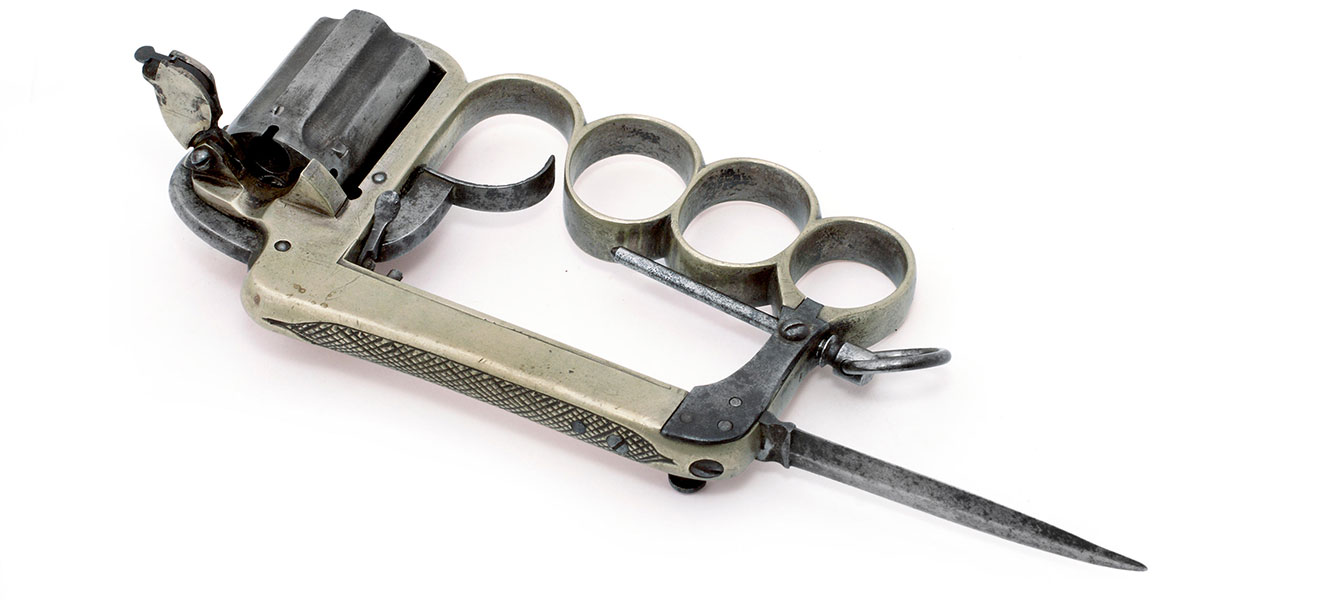
A miniature revolver with built-in knuckleduster and switchblade, the Apache revolver design dates back to the Wild West of the 1860s where it was conceived as a sort of nightmarish Swiss Army knife. Without a barrel the 'gun' wasn't much good at distance, but proved highly effective at close range.
Its use carried on into the 20th century: it was particularly popular in gang warfare in turn-of-the-century Paris, and British commandos and SOE agents are believed to have carried similar weapons during the Second World War.
The gun that fires round corners

Yes, the hoary old joke about a gun that fires round corners really exists in real life – as proven by this German example from the Second World War, which is featured in the Imperial War Museum book Weird War Two – a fascinating encyclopaedia published by the museum and priced at £14.99. This gun wasn't actually designed for taking stealthy shots while sneaking through buildings, but instead for tank crews firing at their attackers while remaining safely hidden within. It's even fitted with a periscope to allow round-the-bend aiming.
The Pepperbox gun
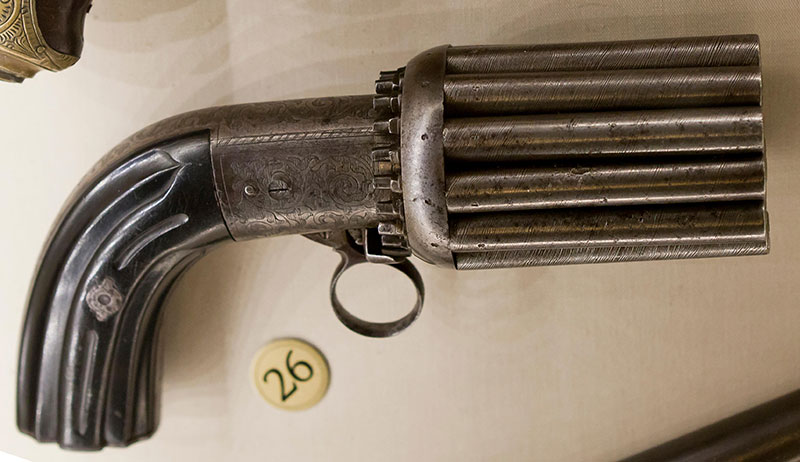
Guns that could be fired multiple times without reloading are an ancient idea – this Mariette Pepperbox pistol was made in around 1750, but some designs date back to the 15th century. Each barrel fires in turn – though there is a variant called the volley gun which unloads all the chambers simultaneously. Pepperbox guns were popular throughout much of the 19th century and were a common sight in the American Civil War.
The Great Panjandrum
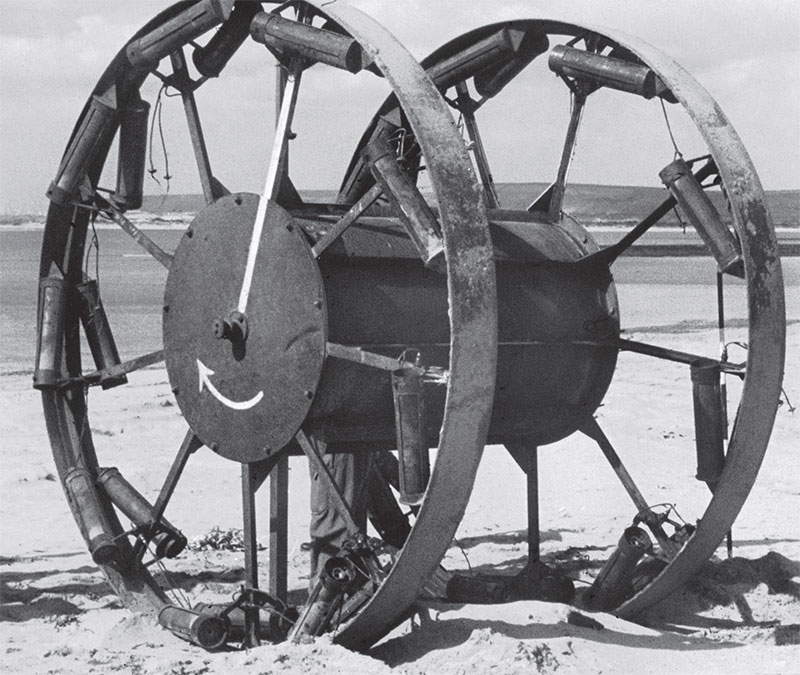
Ahead of the D-Day landings of 1944, Allied weapon designers sought ways of getting past the German beach defence turrets. One of their answers was the Great Panjandrum, a sort of giant Catherine Wheel intended to roll up the sand unleashing rockets. Sadly, it simply didn't work. During a test it very nearly wiped a group of admirals there to observe – they were forced to dive for cover, and the idea was duly scrapped.
The bat firebomb
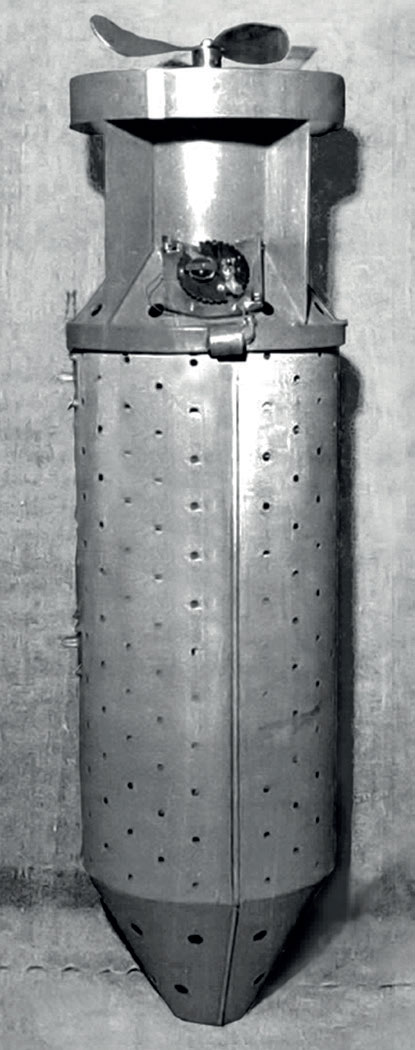
The examples above are odd, but they have nothing on this crazy American invention intended to cause chaos in Japan during the Second World War. This canister was designed to contain 1,000 bats, each one with a small napalm bomb attached to it. Once released, the idea was that they would scatter and find nesting spots in rooftops, after which the napalm would detonate causing fire and chaos.
Never put into practice – despite the inventor somehow getting the backing of President Truman – but astonishingly it did work. That was only discovered when a trial canister was accidentally unleashed on a US Air Force base, causing a huge fire.
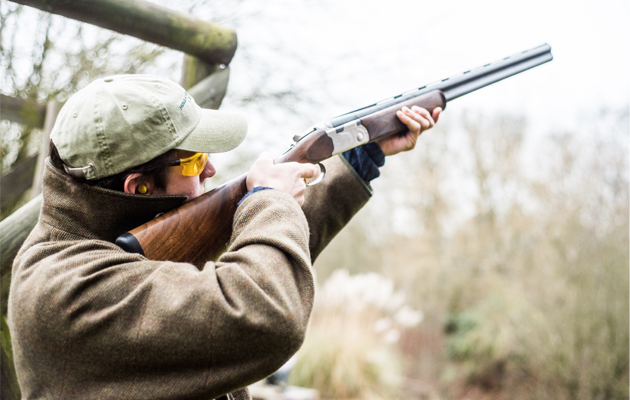
Beginner's guide to clay pigeon shooting
We outline our tips for new shots hoping to become top gun.
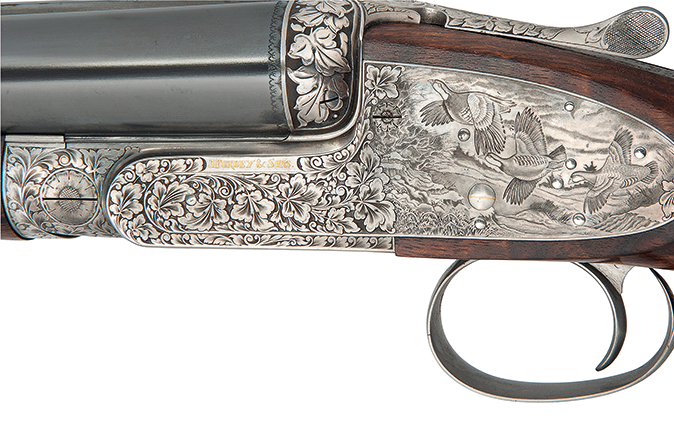
How to buy a shotgun that you can pass down as a family heirloom
Country Life is unlike any other magazine: the only glossy weekly on the newsstand and the only magazine that has been guest-edited by HRH The King not once, but twice. It is a celebration of modern rural life and all its diverse joys and pleasures — that was first published in Queen Victoria's Diamond Jubilee year. Our eclectic mixture of witty and informative content — from the most up-to-date property news and commentary and a coveted glimpse inside some of the UK's best houses and gardens, to gardening, the arts and interior design, written by experts in their field — still cannot be found in print or online, anywhere else.
-
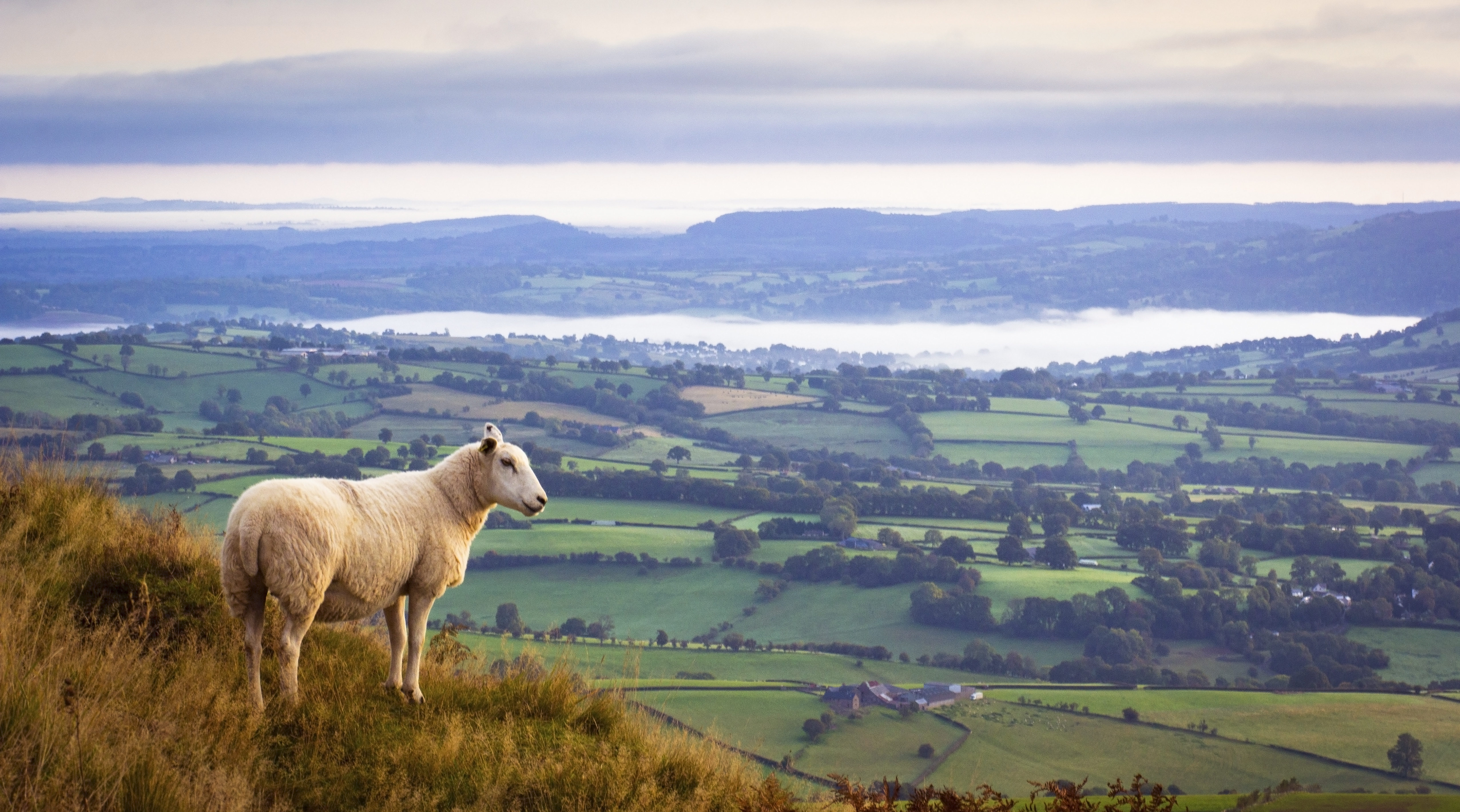 Minette Batters: 'It would be wrong to turn my back on the farming sector in its hour of need'
Minette Batters: 'It would be wrong to turn my back on the farming sector in its hour of need'Minette Batters explains why she's taken a job at Defra, and bemoans the closure of the Sustainable Farming Incentive.
By Minette Batters Published
-
 'This wild stretch of Chilean wasteland gives you what other National Parks cannot — a confounding sense of loneliness': One writer's odyssey to the end of the world
'This wild stretch of Chilean wasteland gives you what other National Parks cannot — a confounding sense of loneliness': One writer's odyssey to the end of the worldWhere else on Earth can you find more than 752,000 acres of splendid isolation? Words and pictures by Luke Abrahams.
By Luke Abrahams Published